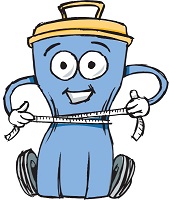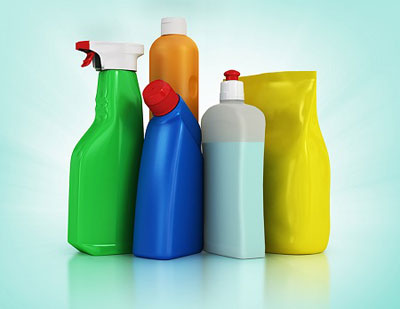Kids’ Waste section
Slim Your Bin Challenge

Over 1 million tonnes of waste are generated in Northern Ireland each year; this equates to 1.75 tonnes per person. This mostly consists of waste coming from households, commercial activities, industry, agriculture, construction and demolition projects, mining and quarrying activities and from the generation of energy. Due to the high quantity of waste that is generated in Northern Ireland it is essential that it is managed in such a way that it is not harmful to human health or the environment.
In the sections that follow you will learn more about waste prevention, where waste comes from and how to dispose of it in a more environmentally responsible manner. You can also check out the Love Food Hate Waste site for further inspiration.
1. Where does all the waste come from?

All of the waste we dispose of is currently sent to landfill. Waste that goes to landfill produces methane that contributes to Global Warming. Did you know that methane is 20 times more damaging to the environment than CO2? For every tonne of waste that goes to landfill 4.5 tonnes of CO2 emissions are released. If we did things a little differently we could divert 2/3 of this waste from landfill.
Did you know that there are a number of different types of waste? They include recyclables, compostable material and material that has to go to landfill. Over half of the waste we produce at home can be composted. Do you compost at home? When you compost at home you are just speeding up what Mother Nature is doing all the time anyway! E.g. leaves on the trees rot away into the ground every autumn and act as a natural fertiliser for the soil. If you would like to learn more about home composting and it's benefits take a look at the Rethink Waste website.
2. Packaging Waste
Packaging is needed to keep the food healthy. BUT a lot of excess product packaging is just to make the product look bigger and better! This clogs our fast filling landfill sites and plastic waste can be harmful to wildlife. Many items such as plastic and glass can take up to 1000 years to break down in the environment. Next time you go shopping see if you can find upackaged fruit and veg.
3. Love Food - Hate Waste

Did you know that we throw out at least one third of the food we buy? Think of what you could buy with the money you would save if you didn't buy this excess food! We have put together some useful tips to help you reduce the amount of food waste you produce. Next time you're shopping you can put them into action:
- Check ‘use by’ dates
- Know the difference between 'use by' and 'best before' dates
- ‘Use by’ dates are found on food that goes off quickly such as meat, dairy and ready to heat products. It is unsafe to use any of these products after the ‘use by’ date on the label even if they look and smell fine. ‘Best before’ dates are usually found on cereals, biscuits, flour, eggs and tinned and frozen food. ‘Best before’ dates give an indication of the quality of the product. Once properly stored a product will remain of good quality up until its ‘best before’ date. When a product reaches its ‘best before’ date it may still be consumed but its quality may have begun to deteriorate. One exception to this is with eggs. Eggs should not be consumed after their ‘best before’ date.
- Stock up on cupboard essentials (this way you will always have something nutritious on hand)
- Monitor your carbohydrate (rice/pasta/potato/bread) portions - measure the amount you actually need
- Don't fall for special offers that are perishable. Perishable goods 'go off' quickly e.g. cheese, fruit or vegetables
- Remember to bring your own bags - In Northern Ireland from the 8th of April 2013 you will be charged at least 5p for new single use carrier bags.
- Try looking up the handy portion calculator on www.lovefoodhatewaste.com
- Cook in bulk and freeze
- Plan meals ahead of time to prevent waste and save money. Fact: Waste that goes to landfill produces methane that contributes to Global Warming. For every tonne of waste that goes to landfill 4.5 tonnes of C02 emissions are released.
- Next time you are shopping for a birthday present, why not buy an invisible gift? Give an experience trip instead (e.g. tickets for the zoo, cinema, bowling, etc.)
Try playing Belfast City Council's interactive Bin Run game as a fun way to help you learn about waste and waste disposal.
The DOE's Rethink Waste campaign includes a fun game - Sort It Out - which helps people to learn about what we should be doing with different types of waste and waste disposal.

4. Household Hazardous Waste
Did you know that we use household hazardous waste products everyday at home for cleaning, gardening, decorating and even for personal hygiene? For example weed-killer, paint, toilet cleaner and nail varnish remover would all be classified as hazardous waste. These products must be stored and disposed of properly in order to avoid a risk to human health and the environment.

